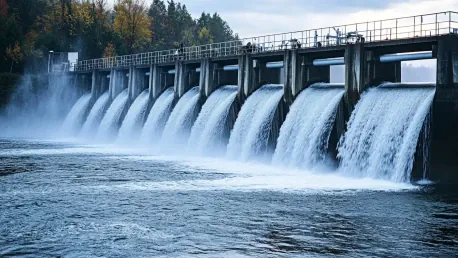In a significant setback for Colbun SA’s ambitious $1.4 billion seawater pumped-storage hydropower project in northern Chile, regional environmental authorities have terminated the evaluation proceedings after finding the project’s Environmental Impact Study (EIS) insufficient. The project, intended to be located in the Antofagasta region, involves constructing a system with two reservoirs and an on-site desalination plant, utilizing a naturally occurring coastal cliff in the commune of Taltal.
Environmental Impact Study Falls Short
The Environmental Impact Study for this colossal 800-MW hydropower project failed to meet the necessary standards, leading to its dismissal by the regional environmental authorities. Key areas of concern included the omission of critical data on wildlife, inadequate consideration of several human communities and their activities, and inaccuracies in mapping the project’s area of influence. Particularly glaring was the failure to monitor wildlife species, nesting sites, and burrows on the highest part of the cliff face—a region initially identified by Colbun as an area of influence for wildlife.
Human Communities’ Concerns Ignored
The most significant issues emerged concerning the project’s potential impact on human communities, especially its proximity to eight indigenous communities. Four of these communities, belonging to the Chango nation and officially registered with the Chilean state, were not properly accounted for. The other four, although unregistered, engage in artisanal fishing and gathering with Chango heritage claims. Despite being less than five kilometers from the proposed construction site, the EIS claimed that there was no overlap with these communities’ activities. Additionally, it overlooked two indigenous communities located only about 500 meters from the construction site, impacting the designated area of influence.
Conflicting Opinions Among Indigenous Groups
Among the eight indigenous communities, three stated that their way of life and customs would not be affected by the project. In contrast, the remaining five argued that the construction and subsequent infrastructure would hinder their movements, obstruct the collection of medicinal coastal plants, and limit cattle grazing. These concerns underscored the cultural and societal ramifications that the project could potentially impose on nearby human communities.
Regulatory Path Forward
Under Chilean regulations, the Environmental Impact Study can be amended or expanded to clarify points during the evaluation process. However, in this case, Colbun’s EIS was deemed to lack essential information, leaving authorities with little to clarify or expand upon. This absence of critical data made it impossible to quantify the project’s environmental impacts on both wildlife and human communities, ultimately leading to the termination of the evaluation proceedings.
Colbun may choose to appeal the decision by addressing the identified omissions and inaccuracies cited by the environmental authority. However, the path forward remains uncertain, as the company must work diligently to rectify the highlighted deficiencies in its Environmental Impact Study.
Lessons Learned and Future Implications
Colbun SA’s $1.4 billion seawater pumped-storage hydropower project in northern Chile has faced a serious hurdle. Regional environmental authorities halted the evaluation proceedings after deeming the project’s Environmental Impact Study (EIS) inadequate. This ambitious project, planned for the Antofagasta region, involves building a system with two reservoirs and an on-site desalination plant. It aims to capitalize on a naturally occurring coastal cliff in the Taltal commune. The cancellation of the evaluation is a significant setback for Colbun SA, as the project was expected to address water scarcity and provide sustainable energy solutions. The company’s goal was to use seawater as a resource, thus contributing to the region’s development and reducing dependency on traditional energy sources. Environmental authorities’ decision to terminate the evaluation process underscores the importance of comprehensive environmental assessments in large-scale projects. This challenge emphasizes the need for thorough preparation and compliance with environmental regulations in future endeavors.









